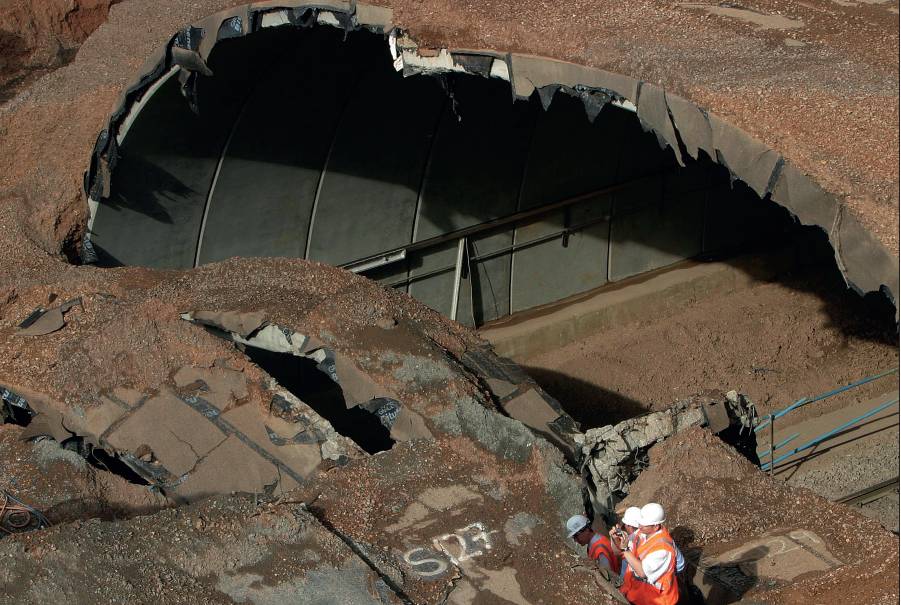Letters to the editor and comments online
Your View
Tunnels
Gerrards Cross report holds valuable lessons
I cannot have been the only civil engineer to have been horrified at the description of events in the recently published Health & Safety Executive report following the collapse of the Gerrards Cross rail tunnel during construction in 2005 (NCE, June).
Clearly, measures surrounding site safety have changed for the better over the last 20 years but the level of ineptitude which seems to have been practised in this instance can only be described as mind-boggling.
 Gerrards Cross: An avoidable disaster?
Gerrards Cross: An avoidable disaster?
Evidently, we have the Rail Natter podcast by Gareth Dennis to thank for enabling this to be exposed and NCE for sharing this more widely.
From the article, it seems that trouble started with the method statement being “ambiguous” in several respects, chiefly the sequence of backfilling the precast arch units. Although the engineer’s site team does not have the authority to approve or reject a method statement, it does have the responsibility to check the method statement for completeness and adequate attention to safety measures. Any doubts arising should be put to the contractor and pursued until a satisfactory answer is given. In this way, glitches in the proposed method may be brought to light and rectified. In this instance, it seems that no such diligence was observed and the method was thus compromised without anyone being aware of its catastrophic implications.
In reviewing a contractor’s method statement, the engineer has a free hand in objecting to anything contained in the statement which appears to be unsafe in any way and can insist that the method be improved. Had this been the case in this instance and the works supervised accordingly, I am convinced that collapse would have been avoided.
At design stage, the span of the arch was almost doubled to accommodate four rail tracks rather than two, thus flattening the arch compared to the original design and reducing the “arch effect” for load bearing.
This must have rung bells with the designer and yet the original three-pin design was retained.
When, during construction, the design consultant, understandably,
requested monitoring of the arch for deflection during backfill, the contractor would have been informed that the deflection readings obtained were worryingly high. Inexplicably, no notice was taken and nothing was done. In other words, the contractor ignored warnings that what he was doing was dangerous.
This can only be described as hugely irresponsible.
This is a sorry tale and one which could have been avoided if proper procedures had been followed by the primary actors. Employers often regard site supervision as an unnecessary add-on to their cost of construction, even though it is insignificant by comparison with the overall cost of a project.
But it only takes an incident like this to roundly contradict that notion. Of course, it also helps to appoint the right contractor, the right design consultant and the right site supervision team – for the right reasons, not necessarily on cost grounds alone.
The best that can be said about this disgraceful affair is that no lives were lost.
Mike Franklin (F), mike_franklin@usa.net
The Editor, New Civil Engineer,
4th Floor, Harmsworth House, 13-15 Bouverie Street, London EC4Y 8DP
Email: nceedit@emap.com
Please state whether you require your contact details to be withheld should your letter be published